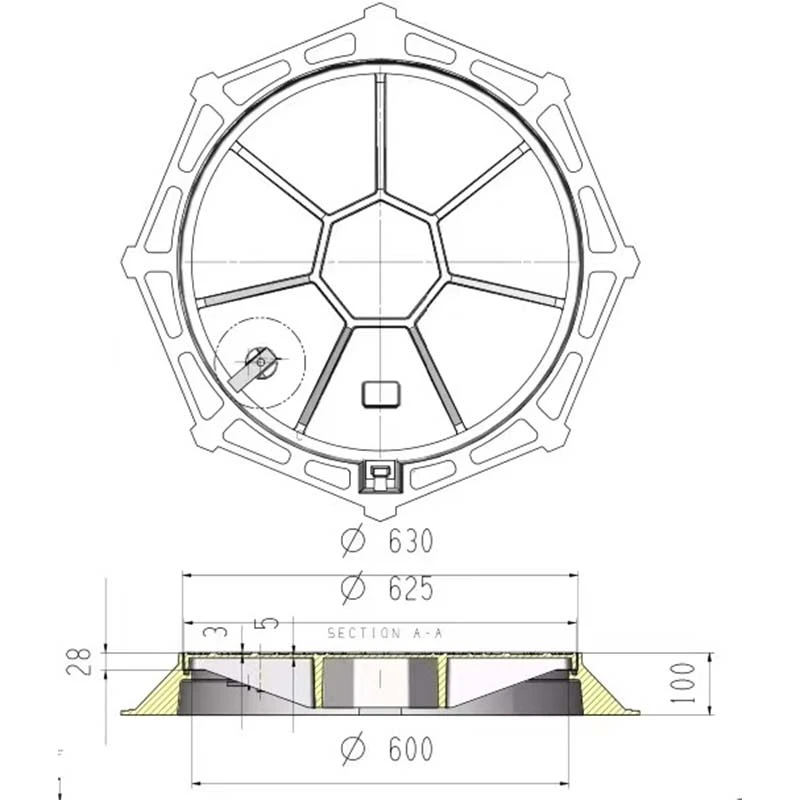wharf bollard
The Importance of Wharf Bollards in Maritime Operations
In the bustling realm of maritime operations, where ships and cargo intertwine in a dance of logistics, one seemingly unassuming object plays a crucial role in ensuring safety and efficiency the wharf bollard. These sturdy, typically cylindrical fixtures, anchored firmly to wharves and docks, serve as essential points for securing vessels during berthing and mooring operations. Understanding the design, function, and significance of wharf bollards can illuminate their role in the multifaceted world of shipping and port management.
Design and Construction
Wharf bollards are constructed from robust materials such as steel or reinforced concrete. Their design is meant to withstand the immense forces generated by moored vessels, which can weigh thousands of tons and exert significant pressure against the dock. The shape of a bollard is often configured to accommodate various mooring lines, including ropes and cables, allowing vessels to be secured at various angles.
Typically, bollards are designed with a minimum working load that reflects the strength and capability needed for the types of vessels that frequent a port. Depending on their intended use, some bollards are designed to be static and fixed in place, while others can be modular, allowing for flexibility in operational layouts. Additionally, the pollution-resistant coatings often applied to bollards help ensure longevity, reducing corrosion from environmental exposure.
Functionality and Safety
The primary function of a wharf bollard is to secure a vessel with mooring lines, preventing it from drifting away due to wind, currents, or other forces. Properly moored vessels protect not only the ship itself but also the wharf and nearby structures from potential damage. The safety of crew members and dock workers is also inherently linked to the proper use of bollards. A well-secured vessel reduces the risk of accidents during loading and unloading operations, thereby promoting a secure work environment.
Mooring operations are complex, often involving multiple lines and strategic positioning of bollards. Experienced dock personnel understand the capacity and layout of bollards, allowing them to implement effective mooring strategies. In unfavorable weather conditions, having sturdy and appropriately placed bollards can mean the difference between a successful docking operation and a perilous situation for both vessel and infrastructure.
wharf bollard

Historical Context
Historically, bollards have evolved from rudimentary wooden structures to the advanced designs we see today. In the early days of maritime trade, ropes were often tied around trees or coastal rocks. The shift to standardized wharf bollards dates back several centuries when port authorities recognized the need for dedicated mooring points that could be consistently relied upon.
Today’s wharf bollards reflect advancements in engineering, safety standards, and maritime regulations. Modern ports invest significantly in reinforcing these structures to accommodate increasingly larger vessels that can carry immense cargo loads. The development of container ships and bulk carriers has necessitated robust designs that can handle the specific demands these ships present in terms of mooring requirements.
The Future of Wharf Bollards
As global shipping continues to grow and evolve, so too will the designs and technology associated with wharf bollards. Innovations in materials science may lead to lighter, yet stronger bollard designs, improving efficiency in installation and maintenance. Additionally, with the increasing focus on sustainability, future bollard designs may incorporate eco-friendly materials and methods of construction.
Furthermore, the integration of smart technology in port operations could bring about advancements in bollard functionality. For instance, sensor technology could provide real-time data on the stress and load on a bollard, alerting port operators to potential issues before they escalate.
Conclusion
Wharf bollards may be small components in the larger maritime ecosystem, but their role is undeniable. They embody the principles of safety, resilience, and innovation that are paramount to effective port operations. As shipping continues to adapt and change, so too will the design and function of wharf bollards, ensuring that they remain integral to the safe and efficient movement of goods across our oceans. Understanding and appreciating these structures can enhance our respect for the intricate logistics that underpin global trade.
-
The Essential Component for Safe Urban InfrastructureNewsMay.14,2025
-
The Backbone of Urban InfrastructureNewsMay.14,2025
-
Practical and Stylish Solutions for Your Drainage NeedsNewsMay.14,2025
-
Lamphole Frame and Cover: Essential for Urban InfrastructureNewsMay.14,2025
-
A Seamless and Aesthetic SolutionNewsMay.14,2025
-
A Must-Have for Safety and DurabilityNewsMay.14,2025
-
Pipe Repair Clamps: Your Ultimate Solution for Efficient RepairsNewsMay.09,2025
